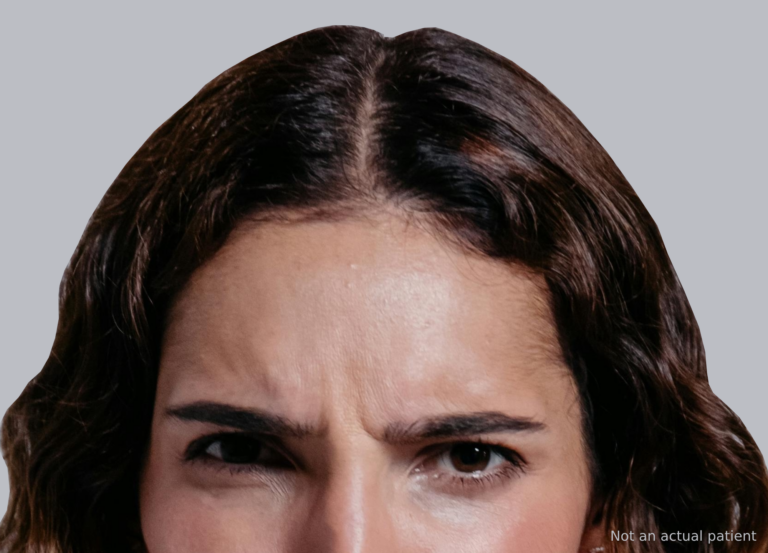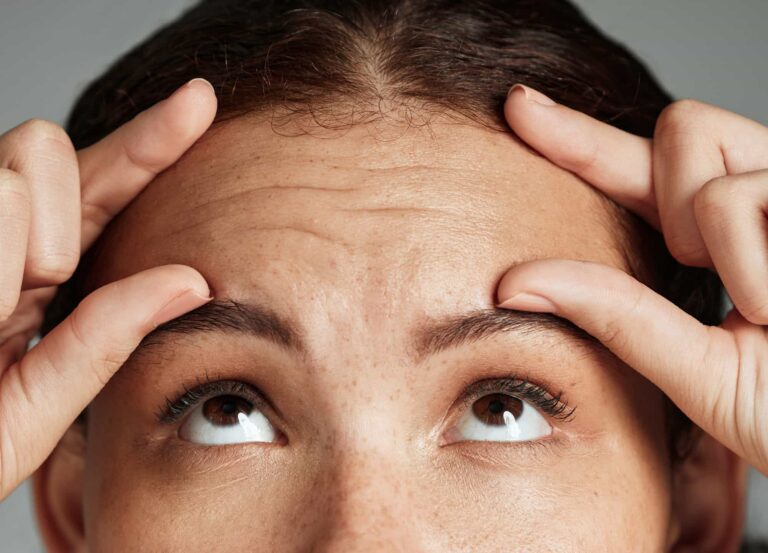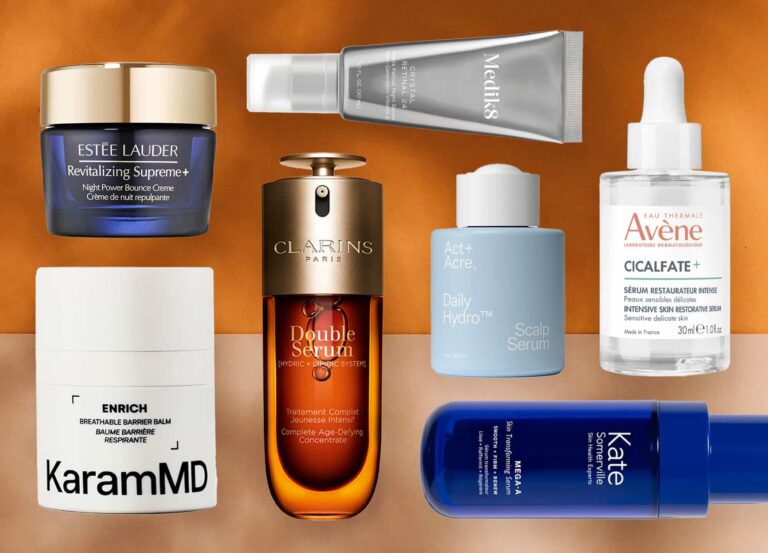We get it: There are bills to pay, and splurging on beauty—specifically, in-office treatments—doesn’t always fit into the budget. And even if you do have a little extra to spend on your skin, it can be difficult to distinguish which inexpensive, professional procedures are actually worth your hard-earned cash. Since effective skin care can be hard to come by, we researched the available options to distinguish the best in-office choices that will give you stellar results without breaking the bank. Check out our top picks below.
Facial
Average cost: $150
Considered both relaxing and effective, facials are a great way to spend your money if you want an instant skin boost. In general, facials cleanse, exfoliate, and moisturize the skin for an improved appearance—however, not all facials are the same. Some can come with additional treatments, like LED light therapy, microdermabrasion, or a chemical peel, to improve conditions such as dry skin, aging skin, or acne. Depending on the products used and the add-on treatments, downtime will vary. But generally speaking, skin may be a bit red post-facial (especially if extractions are performed), but that usually diminishes within a few hours. Results are temporary and may last for only a few days, but at an average cost of $150, facials are an easy (and relatively inexpensive) way to treat yourself to better skin.
Related: 4 Things That Should Happen During Your Facial—and 4 That Shouldn’t
Dermaplaning
Average cost: $100
For skin that feels as smooth as a baby’s, try dermaplaning. The treatment—which costs an average of $100—uses a surgical scalpel to scrape away dead skin cells and peach fuzz from the face, to create a smoother texture. There’s no downtime post-treatment—in fact, skin appears glowy and brighter afterward. It’s also suitable for all skin types except for those with acne flare ups or rosacea (the exfoliation can cause inflammation and worsen these conditions).
Since dead skin cells are sloughed off, it’s thought that this treatment may improve the absorption of skin-care products. And as a bonus, makeup tends to go on more effortlessly due to the smoother surface, which is the perfect canvas for foundation. Sadly, this newly smoothed texture lasts only about three to four weeks—and it takes up to six treatments to seem more long-term results.
Chemical peel
Average cost: $125
As a treatment with more visibly dramatic effects than others on this list, a chemical peel might be the most advantageous when it comes to getting the biggest bang for your buck. While some peels can cost more than $250, there are milder versions that fall below that threshold—with glycolic acid, salicylic acid, and Jessner peels being a few of the less expensive options available. Each peel targets different skin concerns and reaches different levels within the skin, so it’s important to discuss the various choices with your provider before treatment, to ensure that your skin-care needs are met.
Here’s how they work: The chemical solution in skin peels removes both surface and deeper layers of skin, where damage, like hyperpigmentation, is found. This results in a smoother, brighter, more even-toned complexion, for an average cost of only $125. However, it’s important to note that downtime varies, depending on the peel. Skin will most likely be red, like a sunburn, for a few hours post-treatment—and then the skin will start to flake off over the next few days. Since the depth of the peel will determine how much downtime you will need, it’s important to discuss the options with your doctor to determine which peel you’ll benefit from most.
Related: 3 Pro-Strength Chemical Peels for Every Hyperpigmentation Problem
HydraFacial
Average cost: $175
A treatment that’s considered generally safe for all skin types and textures, HydraFacial is a good choice for anyone looking to improve their skin without having to spend a full month’s rent on a single procedure. The resurfacing device cleanses the skin and clears out pores through suction (similar to that of a vacuum), removing dead skin cells, sebum, and debris while also infusing the skin with ingredients like hyaluronic acid and complexion-boosting peptides.
The entire process takes only about 30 minutes and costs an average of $175. Plus there’s typically no downtime associated with a HydraFacial, so you can go about your day as you normally would post-treatment. Results last just 7 to 10 days though, so for long term skin health, it’s recommended as a monthly treatment.
Microdermabrasion
Average cost: $175
Another exfoliating treatment, microdermabrasion removes dead skin cells and debris to reveal a fresh layer of skin underneath. There are two options for microdermabrasion: crystal- or diamond-based. Crystal microdermabrasion uses a gentle spray of superfine crystals on the skin to buff away debris, which is then suctioned into a device through a vacuum-like effect. Diamond microdermabrasion doesn’t emit anything, instead employing a diamond-encrusted tip to resurface the skin and suck up debris.
Post-treatment, the skin is generally a bit pink and occasionally dry; however, this usually fades within a day. The process results in smoother, brighter skin that lasts for about two to four weeks (since it treats only the more superficial layers of skin), and it cashes out at about $175.
DiamondGlow
Average cost: $175
All it takes is 30 minutes and about $175 to reap the benefits of this treatment. DiamondGlow buffs away dirt and oil from the skin while pushing a serum composed of active ingredients deep into your newly cleansed pores—all in a single step. Like microdermabrasion, DiamondGlow uses a diamond-encrusted tip to exfoliate while vacuum suction clears away debris. There are also four serum options to choose from—Vitamin C, Pore Clarifying, Ultra Hydrating, and Skin Brightening—so the treatment can be customized to your specific needs.
Skin is left looking radiant and clear immediately after a single session of DiamondGlow, making it a great treatment to do in the days leading up to an event or special date. However, it’s common to need four to six treatments to see optimal results.
LED light therapy
Average cost: $250
Rarely performed as a solo treatment, LED light therapy—which costs an average of $250—is often combined with a facial or other procedure to improve the skin, using wavelengths of visible light to treat a variety of issues, from acne to wrinkles.
The most common colors used for LED light are red, blue, and near-infrared, each treating a different skin concern. Red light is anti-inflammatory and boosts collagen production; blue treats acne; near-infrared light targets fine lines and wrinkles. The treatment is painless, but results are subtle (it takes multiple sessions to see results)—so it’s best to plan to pair LED light therapy with another skin treatment for boosted, more impressive results.











